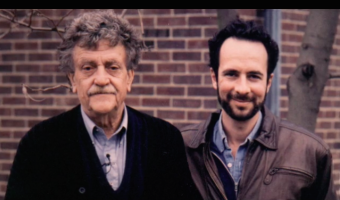When you are collaborating, it’s a lot like dancing. There are steps, actions, paths, communication, coordination, skills, postures and positions, and it all takes time and practice. How do you know if it will work or not? Today, I’d like to offer you six signs to look for. They are inspired by the dancers in Roberto Blizzard‘s video “Dancing Revealed. At Dusk.” If your collaboration has these qualities, it is likely to survive and even thrive. Success in collaboration, as in dancing, is related to the qualities, activities, and behaviours of everyone involved.
Good collaborators are like great dance partners
- They understand and support activities. When a project has the support of everyone involved, it is more likely to succeed. It works best when those involved already know a little about collaborating and have positive expectations of the project. Collaboration does not happen in a vacuum, either. There can be no Riverdance when Swan Lake is playing. Collaborative activity needs support, whether from the organization, environment, or context.
- They show trust and respect for one another. Respectful, civil relations among collaborators and stakeholders create a healthy environment for collaboration. To take it up a notch, you can look at whether everyone taking part sees a benefit to their involvement, however they define that—as learning, enjoyment, an opportunity to contribute or make a difference, or other benefit.
- They keep track of time and monitor the pace of activities for the project. Collaborators make time for the activities the project requires, such as consultation, hearing from contributors, making decisions, and other processes.
- They communicate openly and frequently. Collaboration’s most important activity is communication. There should be lots of it and both formal and informal channels of communication should be used. Meetings, teleconferences and videoconferences contribute just as much to collaboration success as hallway or cubicle conversations, IM chat, and wiki page discussions.
- They are dedicated to the project which has a defined purpose. A collaborative project always has a unique goal—one that no individual could accomplish alone. The people involved know what needs to be achieved and they orient their efforts towards achieving it. If they get a sense that their ideas are out of line with the project or out of the project’s scope, they raise their concerns appropriately and the group can gain renewed clarity.
- They have the skills and resources required, or obtain them. Each person brings specific skills and resources to the project, and that special combination of leadership, communications, efforts, investment and other resources is what supplies the energy to accomplish the goals. If any of the resources required are missing, the team acknowledges the gap and fills it.
These are just a few of many factors that contribute to collaboration success and great projects. If you would like to use a tool to identify the success factors for your project in detail, there is a helpful questionnaire available on the Wilder Research Web site. Be sure to add your comments below. Your feedback is always welcome.
With many thanks to Roberto Blizzard, Vegan Yoga Dude, for the inspiration for this post which originated in the video he posted to Facebook. Roberto kindly gave his permission to use a screen capture here. You are an angel collaborator, Roberto!






2 Comments
Great article. I look forward to personal inventory. Thank you for providing the link.
Where is the sculpture located?
I find the comparison of collaborators to dance partners an interesting one. Usually with dance partners, the male or lead does play more of a leadership role, anticipating the next move and guiding his partner appropriately. Similarly, is there a role for leadership within a collaborative environment or is everyone equally a leader in their own right?
My friend Roberto Blizzard took the video and kindly let me use it here. The sculpture is located in front of an apartment building in the Montreal area.
You are right about the balance, and I liked this video because the partners seem equal. It would take a balance, and yes I agree that leadership should be collaborative. I will post a discussion about that by Michael Hyatt and Michele Cushatt in a blog soon.